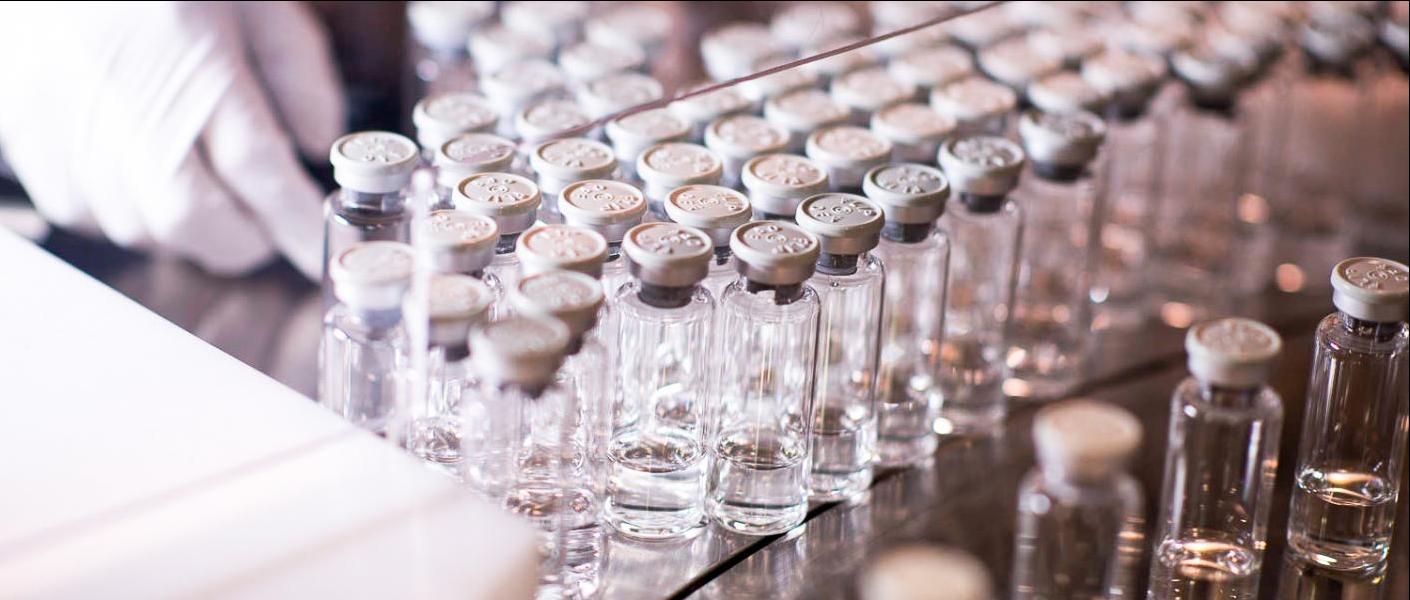
Prefilled Syringe vs Glass Vial Processing: What's the Difference?
Although they have long been on the market, prefilled syringes (PFSs) have become an increasingly attractive choice for medical professionals in recent years.
The biologics sector is growing rapidly and is set to be worth $749.62 billion US by 2028. Increased demand for parenteral treatments, such as cell and gene therapy and COVID-19 vaccines, have led to more manufacturers turning to PFSs for their ease of use and their ability to reduce the risk of dosing errors in comparison to traditional vials.
Nevertheless, switching to prefilled syringes poses manufacturing challenges. Traditional vial and prefilled syringe fill lines are inherently different, and making the switch from traditional glass vials to PFSs requires pharma companies to consider their differences and make accommodations accordingly.
Following on from our previous blog post, here we’ll discuss these differences that manufacturers must account for in their migration to prefilled syringe devices.
What are the differences between prefilled syringe lines and glass vial lines?
Glass vial lines and prefilled syringe vial lines both require different processes to ensure uncompromised sterility ahead of the fill/finish process.
Glass Vial Lines
- Traditional glass vial fill lines often use in-house processed glass before the vial enters the aseptic filling suite.
- Facilities responsible for filling glass vials will receive them in a restricted access barrier system (RABS) and will be subject to inspection to ensure their integrity remains uncompromised.
- Once released, the vials are transferred into a continuous operation washing-depyrogenation tunnel.
- Vials are washed with chilled water for injection, drained and dried with filtered air or nitrogen gas before entering a depyrogenation oven.
- Vials are then dry heated at 275–350°C and transported to cooling stations under filtered air or nitrogen gas and allowed to cool to near room temperature.
Depending on the vial size, washing-depyrogenation line speeds may vary to accommodate fill line outputs and ensure an optimal depyrogenation process takes place.
This process can pose challenges to drug manufacturers, including ingress of particulate matter and increased risk of glass delamination, which is usually detected after the product has been placed on stability for months or even years. manufacturers also face the risk of improper speed setup within the washing-depyrogenation tunnel, which can lead to surface scratches and an increase in rejected units.
Prefilled Syringe Fill Lines
In comparison, prefilled syringes offer significant manufacturing benefits to pharmaceutical companies, including:
- Reduced rejection limits resulting from cosmetic factors are significantly lower than traditional vials as the prefilled syringe barrel is isolated from its neighbours by being placed in a template inside a plastic tub.
- Prefilled Syringes offer greater levels of sterility as they require Gamma radiation for their washing, siliconization and sterilization, and tubs are then single- or double-bagged with plastic wraps.
- Prefilled Syringes offer greater time-saving efficiencies as they require no further processing steps before being taken to the fill line, in comparison to the washing-depyrogenation processes required for glass vials.
What Manufacturers Need to Be Aware of When Switching to Prefilled Syringes
The process of filling the PFS into the fill suite is vastly different to the fill suite processing required for glass vials, requiring far fewer contamination controls while maintaining high levels of sterility.
- First, PFSs must be placed into nested, double-bagged tubs to be disinfected before they can be inserted into the fill line in a Grade B/C environment. In comparison, glass vials must be washed and depyrogenated before moving to a Class II/Grade B classified area accumulation table.
- There, the outer bag is removed from the PFS tub and inserted into the RABS filler system via a conveyor belt. For glass vials, after entering the RABS to be filled and capped, they undergo visual inspection at dedicated stations. They may also go into lyophilizers through HEPA carts or be placed into an automated loading-unloading system (ALUS)
- It will then move into a Class I/Grade A area, where the inner bag is removed, and then taken into an electron-beam (E-beam) tunnel. For glass vials, some may require a manual decontamination process, where steam-sterilized change parts are fitted prior to the introduction of vials into the RABS.
- Here, low-energy electrons will kill any biological entity that may have entered when the inner bag was removed. The tub’s Tyvek ® lid is then removed. Comparatively, filling processes for glass vials are often performed within an air or nitrogen atmosphere and sanitized with vapor hydrogen peroxide (VHP), followed by a period of venting/aeration to remove residual VHP traces.
- In operation modes where manual handling by operators is required to remove the outer bag and place the tub on the conveyor, bioburden numbers of around 100 colony forming units (CFUs) per tub are common. But by harnessing automated operations, manufacturers can dramatically reduce CFU numbers.
By considering the material comprising the outer surfaces of the tub, as well as any effects on the prefilled syringe constituent materials inside the tub, the radiation dosage can be correctly established to ensure optimal sterility each time.
It’s important to note that the physical and chemical properties of polymers are affected by irradiation. This means that the radiation dosage should be correctly selected to minimise its effects while also ensuring proper sterilisation.
Harnessing the benefits of prefilled syringe devices
Although many drug manufacturers are already aware of the benefits of prefilled syringe vials, there are several differences in the way they are prepared and filled that must be considered.
Manufacturers making the switch must adapt their facilities and processes accordingly using the information outlined here to ensure that their future PFS projects are successful.
In our next and final blog post in this series, we’ll be discussing the analytical and engineering requirements for moving a drug product from a traditional vial into a PFS.